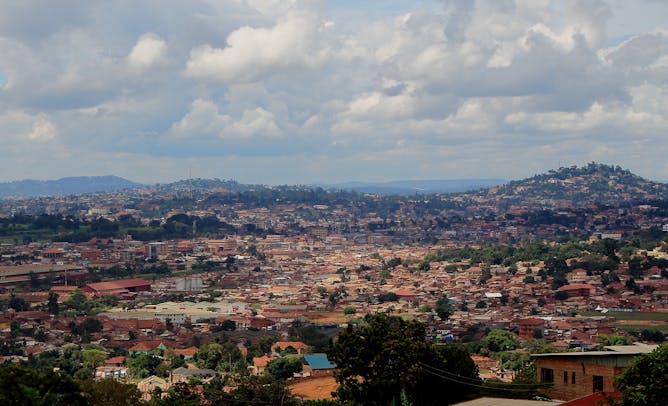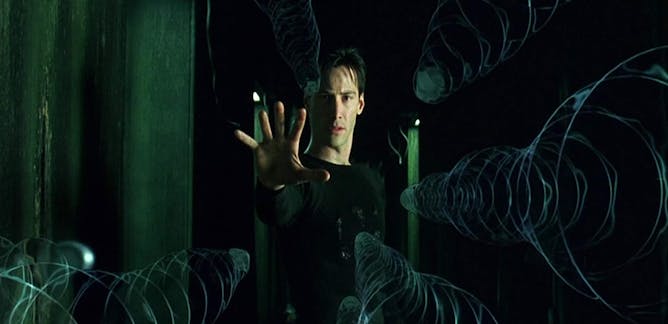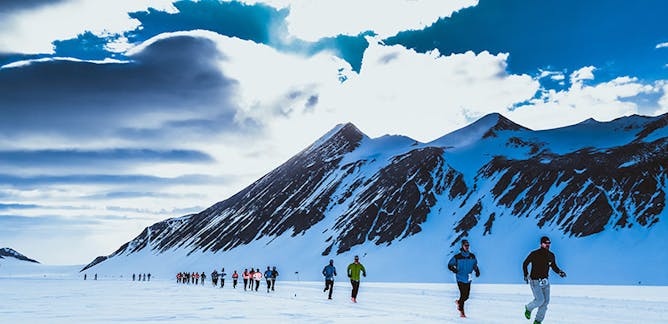|
|
|
Editor's note
|
|
China’s Belt and Road Initiative is a US$1 trillion investment in massive overseas infrastructure projects, from the UK to Uganda and beyond. Jonathan Silver and Alan Wiig are calling it “Silk Road urbanism”, aimed at bringing key cities into the orbit of the Chinese economy through ports, business districts, roads and railways. But will these investments actually benefit local people?
As hostilities that have already claimed 10,000 lives continue between Russia and Ukraine, the US continues to supply the latter with arms. But ultimately it’s ordinary people caught in the crossfire who are paying the price, says Liana Semchuk. While the weapons make big business money, they will do nothing to end the bloody conflict – and will likely make it last even longer.
Meet Mini mum, Mini scule and Mini ature: three of the five new mini frog species that have been discovered in Madagascar. Some are so tiny they’re smaller than a thumbnail. Mark D Scherz explains that the frogs belong to three different groups, revealing that the evolution of miniature frogs in Madagascar is more dynamic than previously thought.
|
Emily Lindsay Brown
Editor for Cities and Young People
|

|
|
Top Stories
|

View of Kampala.
Shutterstock.
Jonathan Silver, University of Sheffield; Alan Wiig, University of Massachusetts Boston
China is funding global infrastructure projects to expand its influence and capacity for economic growth.
|

A solider poses with a Javelin anti-tank system during a military parade in Kiev, Ukraine.
Shutterstock
Liana Semchuk, University of Oxford
At worst, more lethal aid could escalate the conflict further. At best, it will continue to keep alive a conflict that has already claimed more than 10,000 lives.
|

An adult male “Mini mum”, one of the world’s smallest frogs, rests on a fingernail with room to spare.
Dr Andolalao Rakotoarison
Mark D Scherz, Technical University Braunschweig
The largest of these frogs could sit happily on your thumbnail. The smallest is just longer than a grain of rice.
|
Politics + Society
|

Abdelbaqi Ghorab, Lancaster University
Algerians are working to change their future while avoiding the bloodshed of their past.
| |

Tom Quinn, University of Essex
The prime minister has told her MPs that if they back her deal, she will leave office before the next stage of the Brexit process begins.
|
|
|
Business + Economy
|

Igor Vojnovic, Michigan State University; Minting Ye, Michigan State University
A new study examined how growing numbers of single women in one of the world's most expensive cities are contributing to its gentrification.
| |

Seán Mfundza Muller, University of Johannesburg
South Africa isn't having an honest debate about proposals to fix its power utility Eskom, and the role that renewables might play.
|
|
|
Science + Technology
|

Richard Colledge, Australian Catholic University
Cult film The Matrix was released 20 years ago this month. From Plato to Baudrillard, the film explored philosophical dilemmas we are still wrestling with today.
| |

Harriet Dempsey-Jones, UCL
Would you rather lose your sense of touch or your vision? Here are the pros and cons of each, according to science.
|
|
|
En français
|

Hugues François, Irstea ; Samuel Morin, Météo France
Les stations de ski tentent de se préparer au déficit d’enneigement dans le contexte du changement climatique. Une situation qui ravive les oppositions entre aménageurs et protecteurs de la montagne.
| |

Franck Brocherie, Institut national du sport de l'expertise et de la performance (INSEP)
Pour être un athlète de très haut niveau, il faut pouvoir être performant dans tous les environnements climatiques.
|
|
|
| |
| |
| |
| |
| |
| |
|
|
|
|
|
|
|